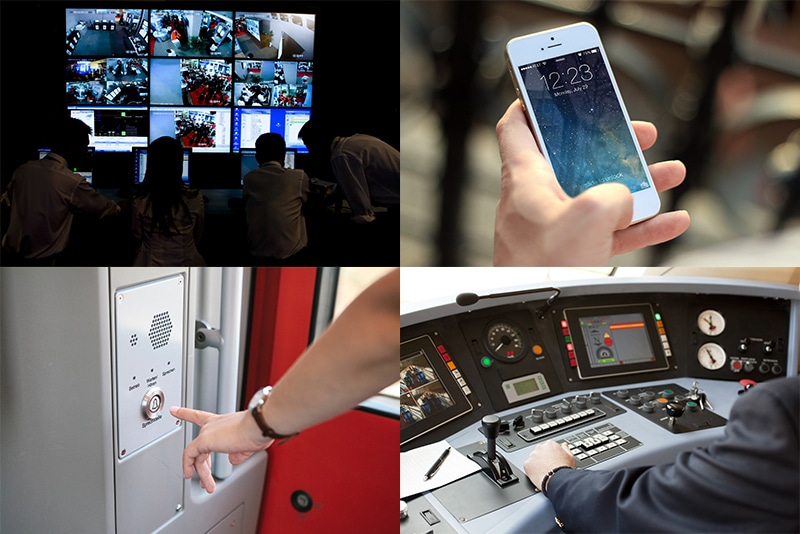
Telephone systems. Through integration with PABX and PSTN telephony systems, users of the TETRA network will be able to establish communications and receive calls from conventional telephone extensions, whether from the public or a private network. Thanks to this integration, it is possible to blur the limits of the TETRA network, multiplying the communication possibilities for TETRA users. All this is possible thanks to the telephone gateways installed in the infrastructure and based on standard protocols, facilitating interoperability between the TETRA world and the conventional telephone network.
Other PMR radio systems. Either to replace an old system or to interconnect agencies which use different technologies, such as P25, DMR or analog systems, different gateways can be installed in order to enable conection between TETRA and other networks users. In this way, it is possible to extend the scope of communications to these other technologies.
Dispatch and control centers or CAD systems (Computer Aided Dispatch). This is a priority within PMR radio systems, since the control centers allow managing, monitoring, recording and establishing communications between the different terminals and TETRA groups of the network, in addition to the exchange of short messages. The objective is to improve coordination between teams and their performance, as well as to have a better knowledge of the situation of the organization.
AVL (Automatic Vehicle Location) systems. TETRA is a reliable and proven technology providing voice and narrowband data communications, and this virtue makes it optimal for data-based applications that do not require a broadband services, such as GPS positioning data. In the control center, it’s possible to monitor and record the GPS position that TETRA terminals report through the use of data services, such as short SDS messages.
Applications type ATS, TCMS, ETCS signaling or others. Oriented to the world of road and rail transport, these applications allow the management and monitoring of buses, trains and subways or trams. This integration allows, for example, the management of vehicle alarms or positioning, all by means of the same TETRA system that is used for voice communications.
Public address and intercom systems. A TETRA network can act as an interface with the public address and intercom systems of, for example, a sports stadium, a passenger station or even a train car. In this way, it also becomes a valuable tool for transmitting messages, notices or instructions from control center to the general public.
Voice and data communications recorders. The recording and subsequent reproduction of individual and group communications that occur in the system can be enabled. The use of standard VoIP protocols facilitates the integration of these platforms, and the recorders usually incorporate search and filtering tools, with criteria such as day and time, terminal, group, base station, duration, etc., which facilitates reconstruction of events or, in general, monitor the communications produced in the system.
SNMP systems or “umbrela management systems”. They allow the reception in real time, recording and subsequent consultation of the alarms that could occur in the operation of the components of the TETRA system, such as elements of the control nodes or the base stations. They usually incorporate search tools, and also establish actions so that, in the event of alarms of a certain level of severity, they automatically send a report via SMS or email to the system administrator, notifying them of this fact.
Corporate databases. TETRA systems can also support that users can access databases or corporate applications from their terminals, tailored to the needs of the organization and its users. A good example could be the consultation of police databases.


